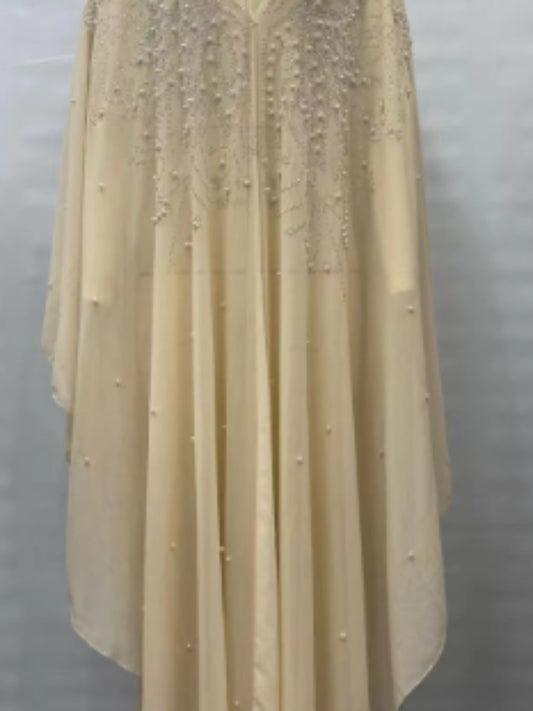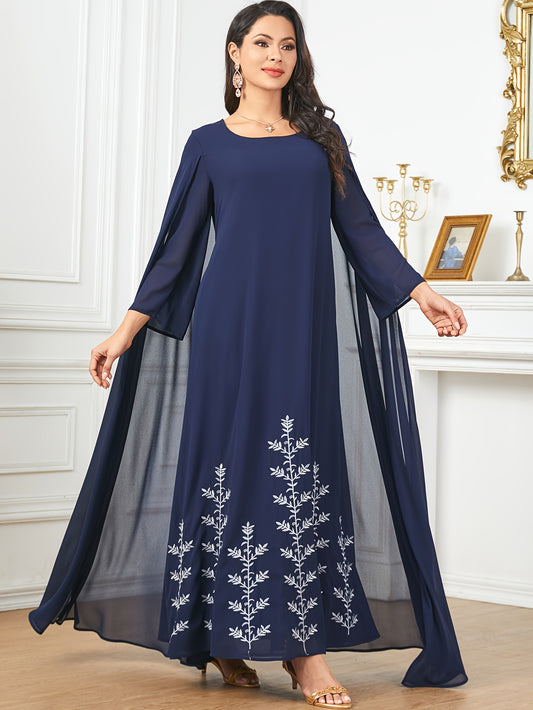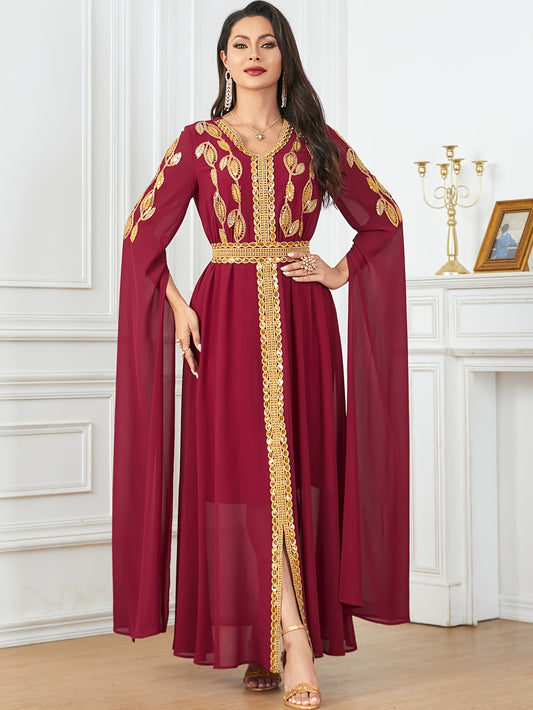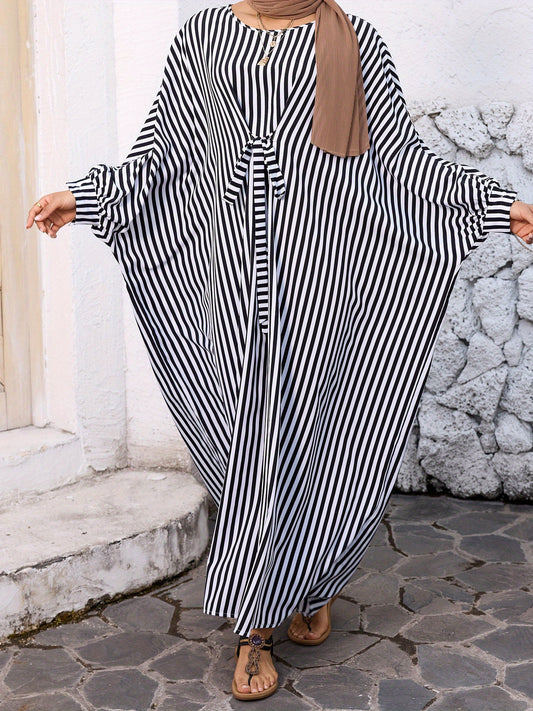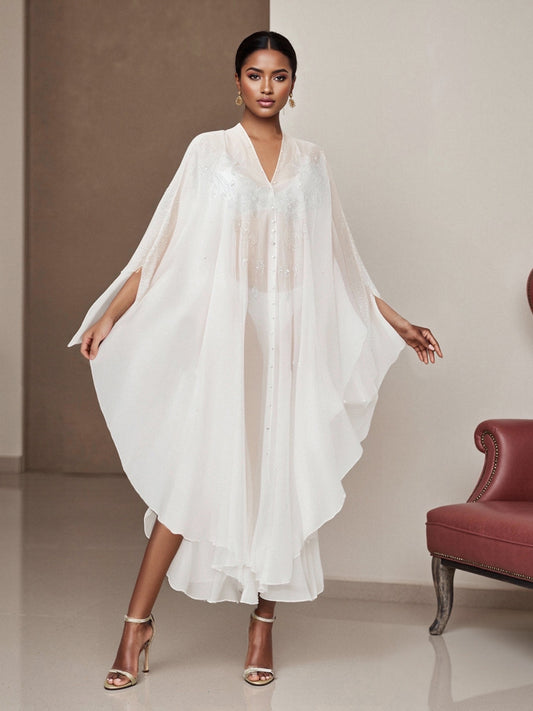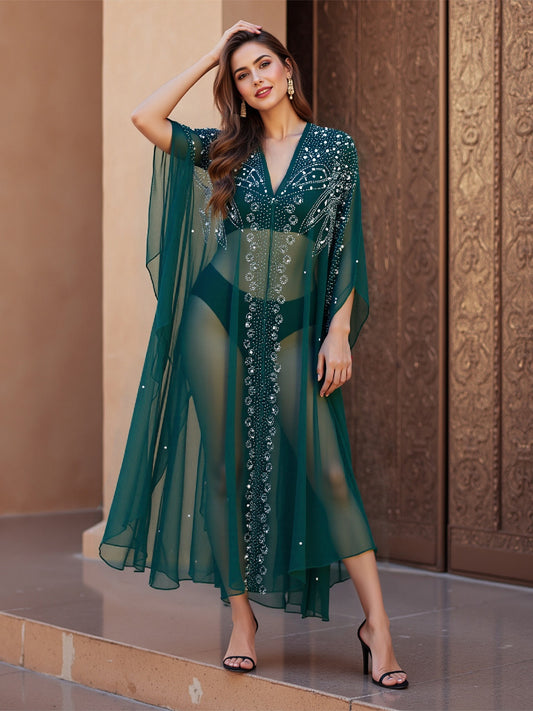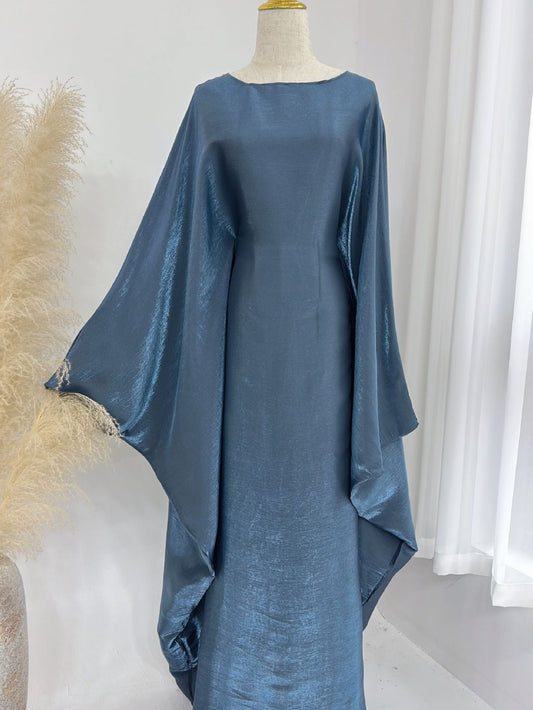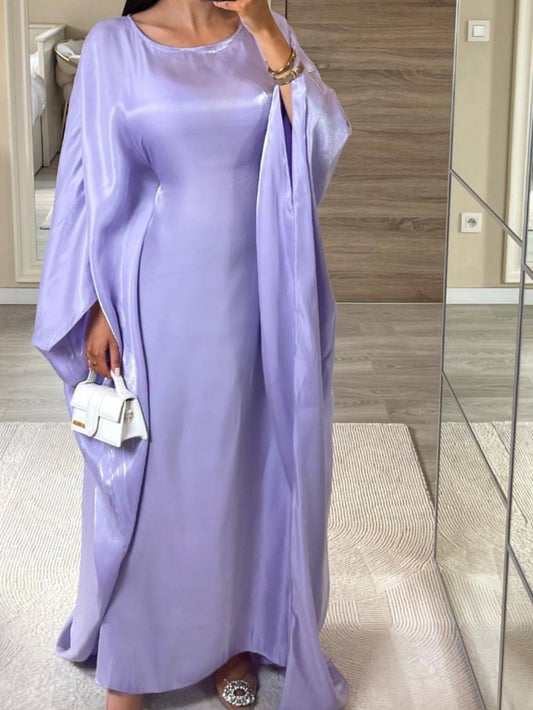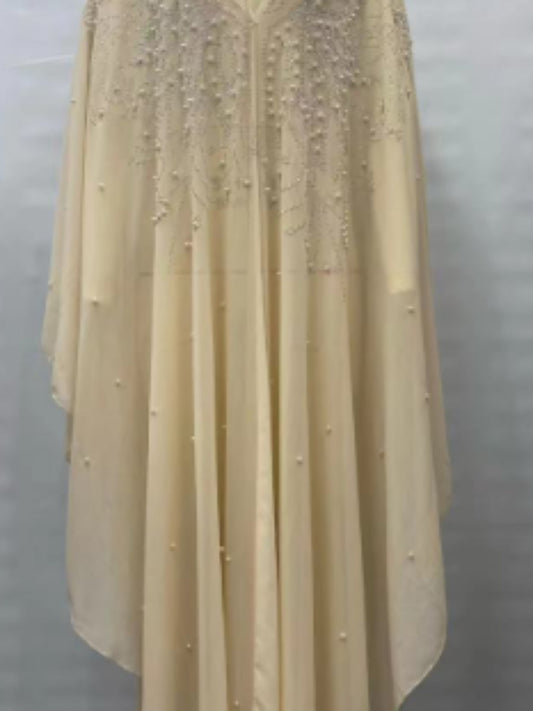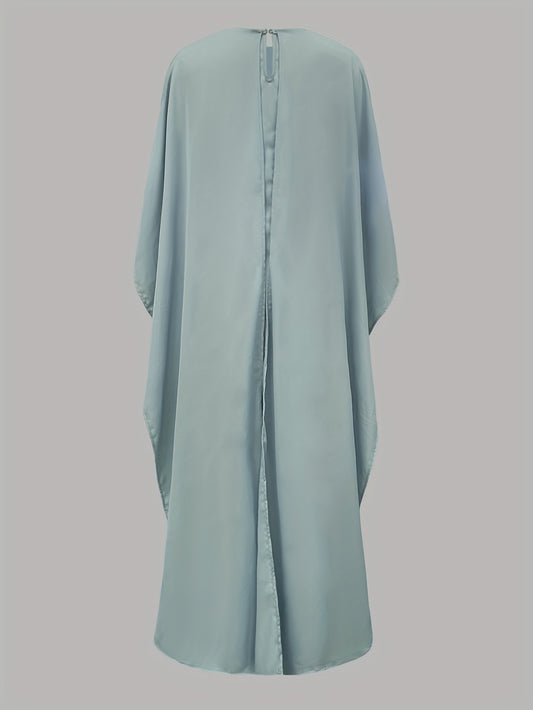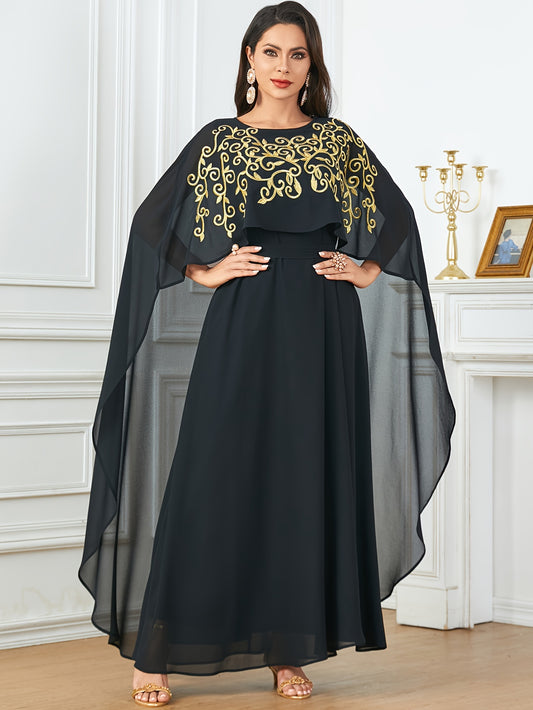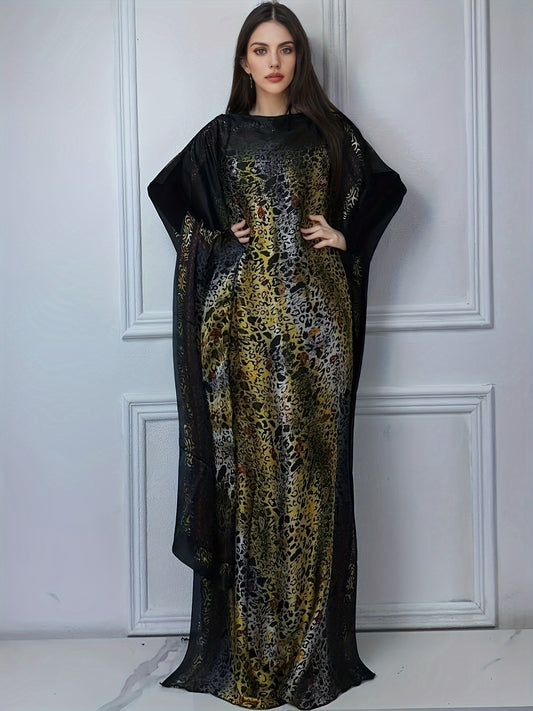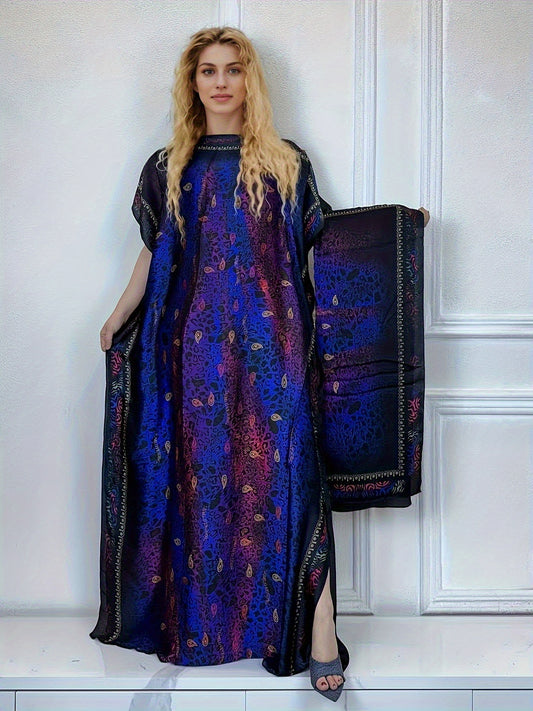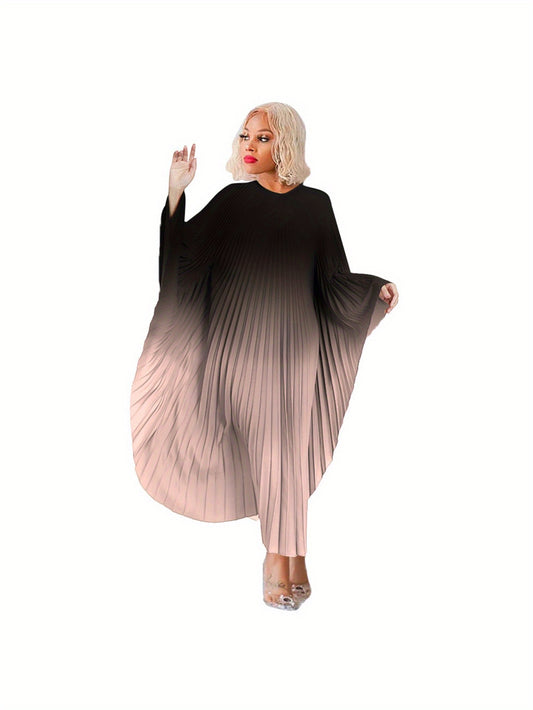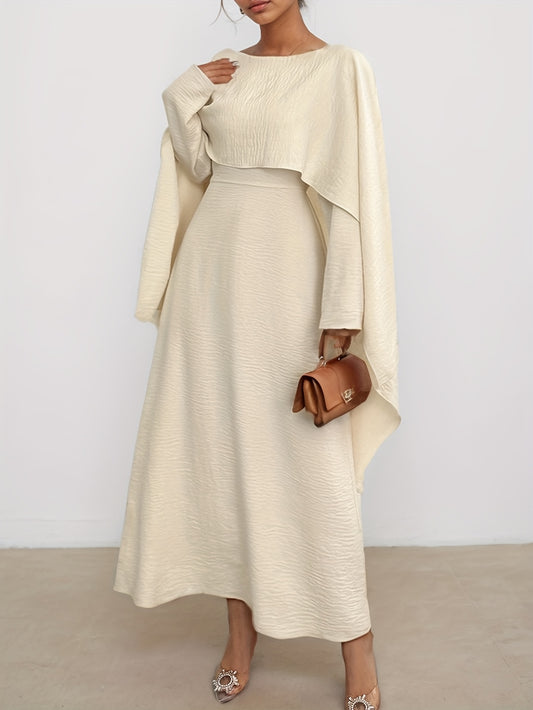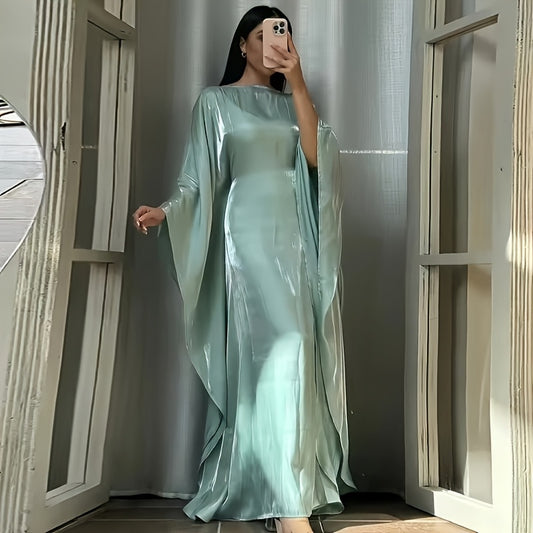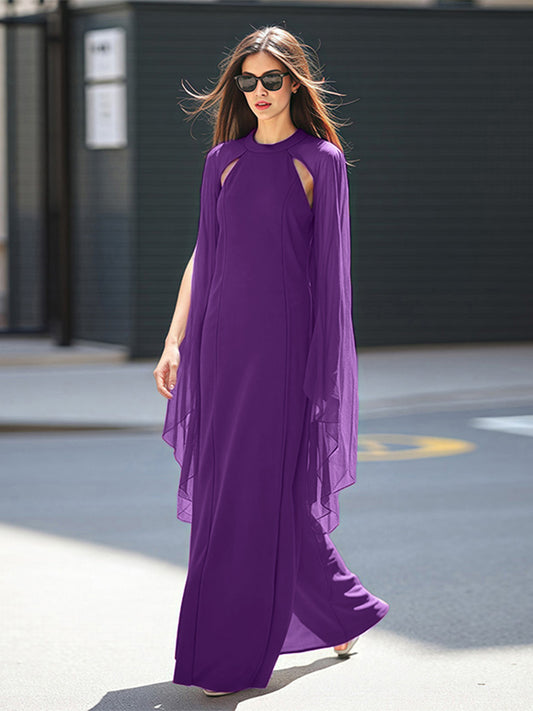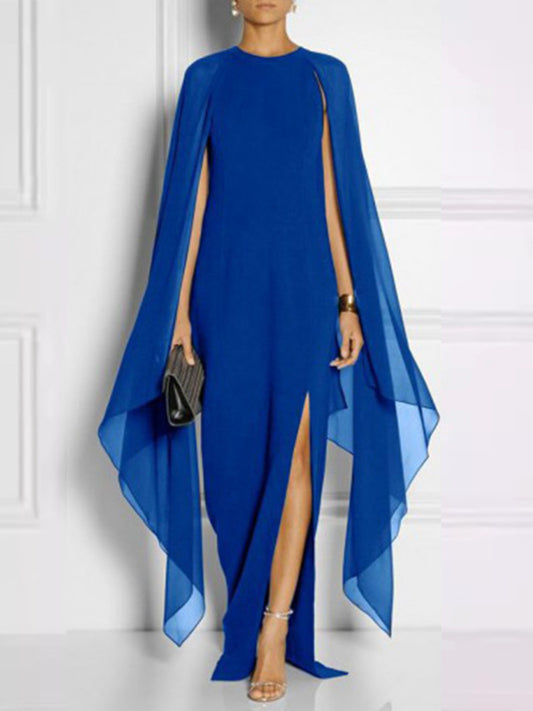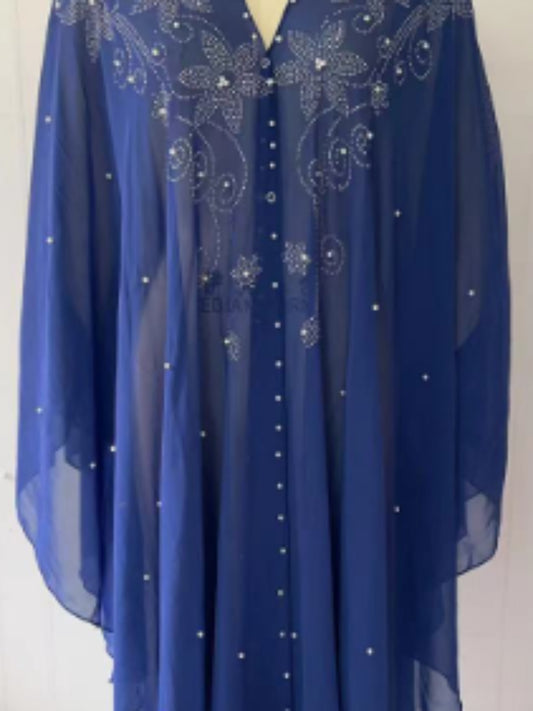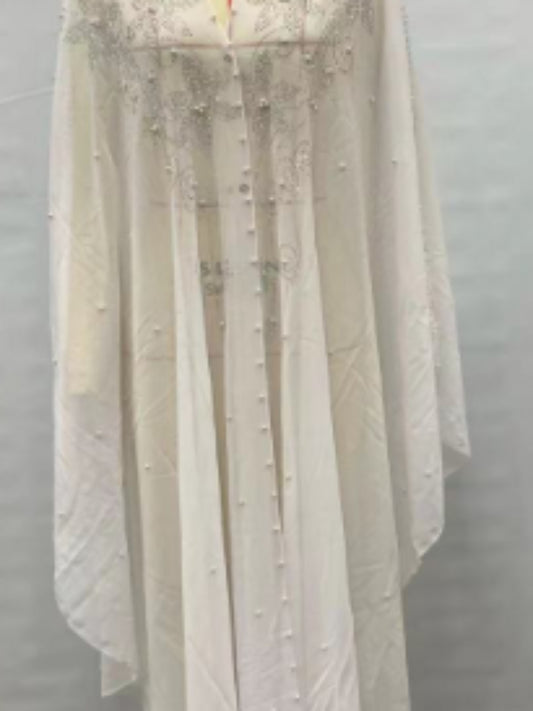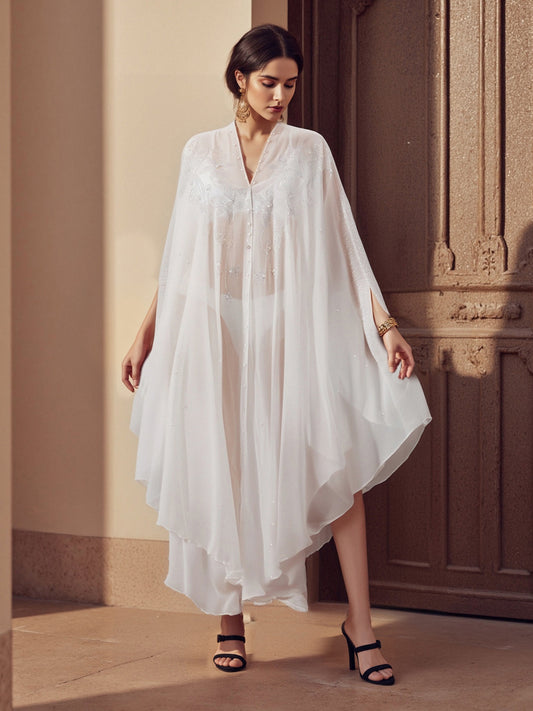About Cape Abaya
Cape Abaya Women Collection
The cape abaya represents a fascinating evolution of traditional modest fashion, blending heritage with contemporary design to create a garment that is both timeless and innovative. For centuries, women have sought attire that balances modesty, comfort, and grace. The abaya, rooted in cultural and religious traditions, has long fulfilled this role. Yet, as global fashion has embraced diversity and inclusivity, new interpretations have emerged. Among them, the cape abaya has become one of the most striking, offering women worldwide a garment that flows with elegance, adapts to multiple settings, and resonates with both tradition and modernity.
The Historical Roots Of The Abaya
The abaya traces its heritage to the Arabian Peninsula, where it was worn for modesty and protection in desert climates. Traditionally a loose black cloak, the abaya served as a practical garment that shielded women from the sun and dust while ensuring cultural modesty. Early abayas were often handmade, using simple fabrics and cuts, emphasizing their functional role. Over time, as societies urbanized and fashion evolved, the abaya transformed from purely practical clothing into an expression of identity and artistry. This transition was influenced by trade, exposure to global fashion trends, and the creativity of local artisans.
How The Cape Abaya Emerged
The cape abaya is a modern reinterpretation of the traditional cloak. Designers began experimenting with silhouette and layering to introduce cape-like drapes that cascade over the shoulders and arms. These adaptations added movement, elegance, and dimension while preserving the core essence of modesty. The cape element created a regal appearance reminiscent of cloaks and outerwear found in other cultures. This design soon gained popularity among women who desired a garment that was both modest and dramatic, allowing them to stand out while remaining true to cultural traditions.
Defining Features Of A Cape Abaya
Unlike traditional abayas with straight sleeves, cape abayas are defined by their additional draped fabric. This cape may be detachable or integrated, long or short, plain or decorated. Some designs mimic flowing wings, while others resemble tailored cloaks. This versatility enables designers to create a wide variety of looks, from minimalist and understated to ornate and embellished. The cape adds dimension, giving the abaya a sense of movement and theatricality that elevates it beyond everyday wear.
The Role Of Fabrics In Cape Abayas
Fabric choice profoundly shapes the character of a cape abaya. Designers use lightweight chiffon, georgette, or organza to achieve fluid, ethereal drapes. Satin and silk provide sheen and luxury, ideal for evening wear. Heavier materials like crepe or wool blends offer structure, perfect for winter garments. Cotton blends ensure breathability for casual or everyday use. Fabrics are often chosen to balance comfort with aesthetics, ensuring that cape abayas are practical for diverse climates and versatile for formal or informal settings. Many modern versions incorporate eco-friendly or sustainable fabrics, reflecting the global shift toward conscious fashion.
Craftsmanship And Detailing
The artistry behind cape abayas lies in meticulous craftsmanship. Skilled artisans focus on the flow of fabric, the alignment of capes, and the intricacy of embellishments. Embroidery may trace the edges of the cape, sequins may cascade down the shoulders, or lace trims may highlight the hem. High-quality pieces often feature hand-finished details, from beadwork to appliqué designs. Some luxury cape abayas even incorporate Swarovski crystals or couture embroidery techniques. The balance between modesty and style requires precision—too much embellishment risks overwhelming the design, while too little may understate its elegance.
Regional Interpretations Of Cape Abayas
Different regions have embraced the cape abaya in unique ways.
-
Gulf Countries: In the UAE, Saudi Arabia, and Qatar, cape abayas are often opulent, featuring luxurious fabrics, bold embellishments, and dramatic silhouettes. They are commonly worn during weddings, Eid celebrations, and cultural gatherings.
-
South Asia: In countries like Pakistan and India, cape abayas often feature intricate embroidery and colorful fabrics, reflecting regional textile traditions.
-
Western Countries: Among women in Europe and North America, minimalist cape abayas in neutral tones have become popular for their ability to blend modest fashion into modern urban wardrobes.
-
North Africa: Cape abayas here often integrate local cultural patterns and lighter fabrics suited for warm climates.
These regional differences highlight the global adaptability of the cape abaya.
Cape Abayas In Modern Wardrobes
Today’s woman often juggles work, family, and social commitments. The cape abaya reflects this multifaceted lifestyle. It can be worn to professional settings, styled with minimal accessories for an elegant but understated look. For evening events, embellished versions with sequins or beadwork create glamorous outfits. Cape abayas are also practical for travel, offering comfort during long journeys while maintaining modesty. This adaptability explains why they have gained popularity not only in the Middle East but across the world.
Fashion Influence And Global Acceptance
The rise of modest fashion has placed garments like the cape abaya in global fashion conversations. International runways in Paris, London, and Dubai increasingly showcase abayas as couture pieces. Fashion influencers on platforms such as Instagram and TikTok demonstrate how cape abayas can be styled with modern accessories, making them accessible to a younger global audience. Designers outside the Middle East have also drawn inspiration from cape abayas, integrating elements into global collections. This cross-cultural embrace reinforces the cape abaya’s role as a global fashion icon.
Styling Options And Versatility
The versatility of cape abayas allows women to experiment with endless styling options. A black chiffon cape abaya can be paired with pearl earrings and heels for an evening look. A beige crepe cape abaya with a structured belt works for office wear. Bold jewel-toned cape abayas make strong fashion statements during weddings or cultural events. Accessories such as handbags, belts, and shoes enhance styling further. The cape element itself offers flexibility—it can be draped freely for dramatic effect or fastened for structured silhouettes.
Emotional And Cultural Significance
The cape abaya is more than just a garment—it carries emotional and cultural significance. For many women, wearing an abaya is an expression of faith and cultural pride. The cape variation allows them to celebrate tradition while embracing modern aesthetics. Many women associate their abayas with important milestones: weddings, religious festivals, family gatherings, or professional achievements. These emotional connections elevate the cape abaya beyond clothing, turning it into a symbol of identity and personal history.
Everyday Wear Vs. Luxury Adaptations
Cape abayas exist across the fashion spectrum. Everyday designs emphasize comfort, practicality, and affordability. They use breathable fabrics, neutral colors, and minimal detailing. On the other end of the spectrum, luxury cape abayas feature hand-stitched embellishments, couture fabrics, and dramatic silhouettes. These high-end designs are often worn at galas, weddings, or international events where women want to display both modesty and glamour. The coexistence of everyday and luxury designs reflects the cape abaya’s versatility as both a wardrobe staple and a high-fashion statement.
The Role Of Accessories
Accessories play an essential role in enhancing cape abayas. Belts create structured silhouettes, jewelry adds sparkle, and handbags provide balance to flowing garments. Shoes also influence the final look: heels add sophistication, while flats emphasize comfort. Scarves or hijabs in complementary colors complete the outfit, allowing women to express individuality while maintaining modesty.
Sustainability In Cape Abayas
Sustainability has become a priority in the fashion industry, and cape abayas are no exception. Many designers now focus on eco-friendly fabrics such as organic cotton, bamboo blends, and recycled fibers. Ethical production practices ensure that artisans are paid fair wages for their work. By investing in high-quality cape abayas, women contribute to sustainable fashion, as these garments are designed to last for years. The shift toward conscious consumption aligns with the values of women who want fashion that is both beautiful and responsible.
Innovations In Cape Abayas
Modern innovations continue to redefine cape abayas. Some designs feature detachable capes, allowing women to switch between styles easily. Reversible fabrics provide two looks in one garment. Pockets and adjustable belts add practicality for daily use. Technological innovations, such as digital embroidery and laser-cut fabrics, allow for intricate patterns that were previously difficult to achieve. These advancements ensure cape abayas remain relevant in contemporary fashion, appealing to women across generations.
Fabulive’s Cape Abaya Collection
Fabulive’s cape abaya collection exemplifies the perfect blend of tradition and modernity. By offering designs that combine luxurious fabrics, intricate craftsmanship, and versatile silhouettes, Fabulive ensures women can find cape abayas suited for every occasion. Whether for daily wear, professional environments, or formal events, Fabulive’s designs capture the elegance and individuality of modern modest fashion. Customers value Fabulive not only for its premium quality but also for its commitment to sustainability and cultural authenticity.
The Investment Value Of Cape Abayas
Cape abayas are often considered investments. High-quality designs last for years, transcending seasonal fashion cycles. Luxury versions, particularly those created by renowned designers, may even appreciate in value. More importantly, cape abayas hold emotional worth. They accompany women through significant life events, becoming treasured pieces in wardrobes. Their ability to bridge tradition and modern fashion ensures their long-term relevance.
The Legacy Of The Cape Abaya
The legacy of the cape abaya lies in its ability to represent both continuity and change. It preserves the cultural and religious significance of traditional abayas while embracing innovation, creativity, and individuality. Its adaptability across regions, lifestyles, and occasions ensures its place as a global fashion symbol. The cape abaya demonstrates that modest fashion is not limited—it is expansive, inclusive, and endlessly inspiring.
Reviews
-
Fatima Rahman, UAE: “This cape abaya flows beautifully. It feels modest but modern at the same time. I wear it for both Eid and work events.” ⭐⭐⭐⭐⭐
-
Emily Carter, USA: “I purchased a cape abaya for a cultural event, and I was amazed at how elegant and comfortable it was. I’ve started wearing it casually too.” ⭐⭐⭐⭐
-
Mariam Al-Farsi, Oman: “The craftsmanship is excellent. The embroidery on the cape is delicate yet durable. Definitely a piece I’ll treasure.” ⭐⭐⭐⭐⭐
-
Olivia Brown, UK: “I wanted something modest yet fashionable, and this cape abaya exceeded expectations. The design is simple but striking.” ⭐⭐⭐⭐
-
Layla Nasser, Saudi Arabia: “The fabric is breathable and perfect for warm weather. The cape detail makes me feel confident and chic.” ⭐⭐⭐⭐⭐
-
Hannah Wilson, Canada: “I wore my cape abaya to a wedding, and it was perfect. Comfortable, stylish, and very flattering.” ⭐⭐⭐⭐⭐
-
Aisha Malik, Australia: “It’s versatile enough to wear casually or formally. The cape adds a modern edge I love.” ⭐⭐⭐⭐
-
Sophia Wagner, Germany: “The quality is outstanding. I’ve had mine for months, and it still looks new. Worth every penny.” ⭐⭐⭐⭐⭐
-
Noor Hassan, Qatar: “This abaya is practical for daily wear but elegant enough for special occasions. I’ve received so many compliments.” ⭐⭐⭐⭐
-
Isabella Rossi, Italy: “The cape design feels like haute couture. I don’t usually wear abayas, but this one feels like high fashion.” ⭐⭐⭐⭐⭐


